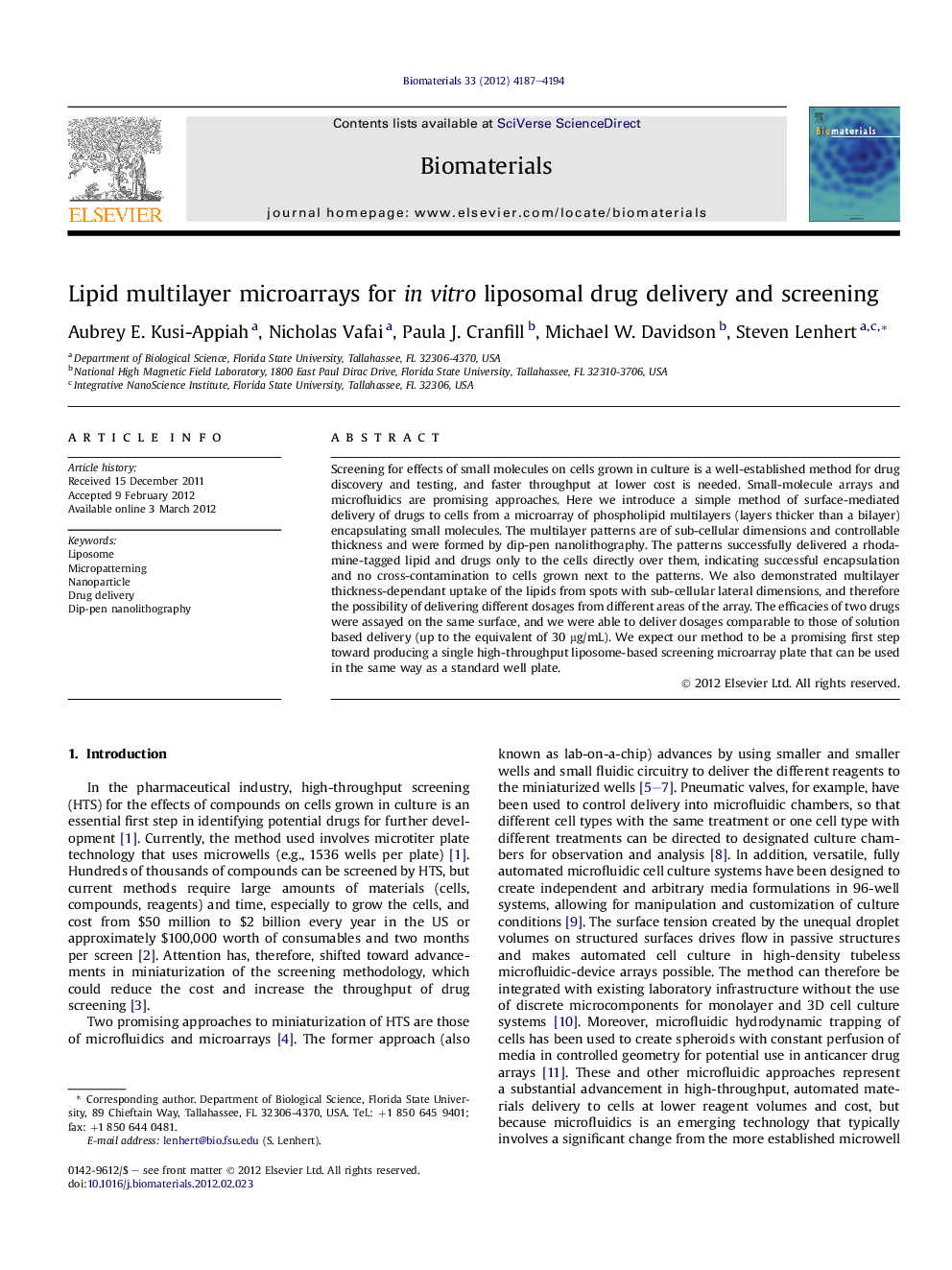| Article ID | Journal | Published Year | Pages | File Type |
|---|---|---|---|---|
| 7305 | Biomaterials | 2012 | 8 Pages |
Screening for effects of small molecules on cells grown in culture is a well-established method for drug discovery and testing, and faster throughput at lower cost is needed. Small-molecule arrays and microfluidics are promising approaches. Here we introduce a simple method of surface-mediated delivery of drugs to cells from a microarray of phospholipid multilayers (layers thicker than a bilayer) encapsulating small molecules. The multilayer patterns are of sub-cellular dimensions and controllable thickness and were formed by dip-pen nanolithography. The patterns successfully delivered a rhodamine-tagged lipid and drugs only to the cells directly over them, indicating successful encapsulation and no cross-contamination to cells grown next to the patterns. We also demonstrated multilayer thickness-dependant uptake of the lipids from spots with sub-cellular lateral dimensions, and therefore the possibility of delivering different dosages from different areas of the array. The efficacies of two drugs were assayed on the same surface, and we were able to deliver dosages comparable to those of solution based delivery (up to the equivalent of 30 μg/mL). We expect our method to be a promising first step toward producing a single high-throughput liposome-based screening microarray plate that can be used in the same way as a standard well plate.
